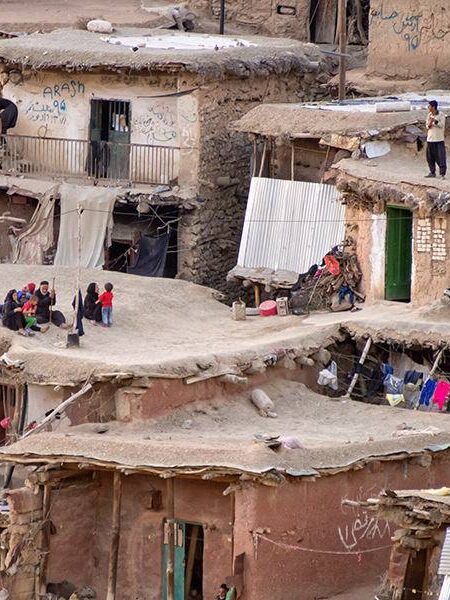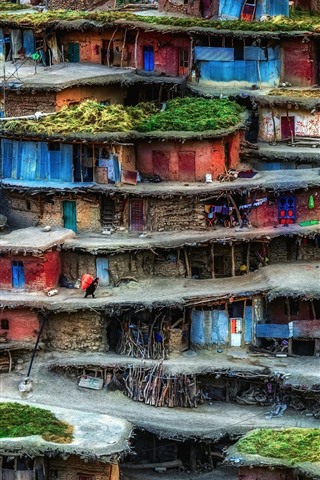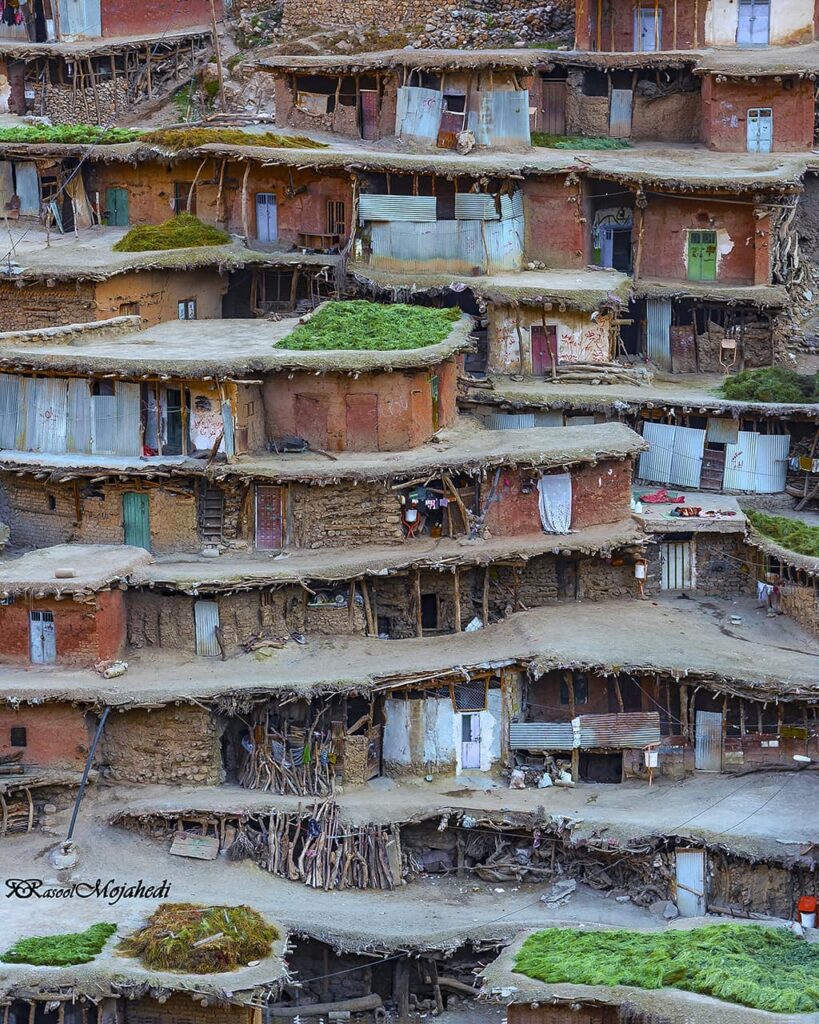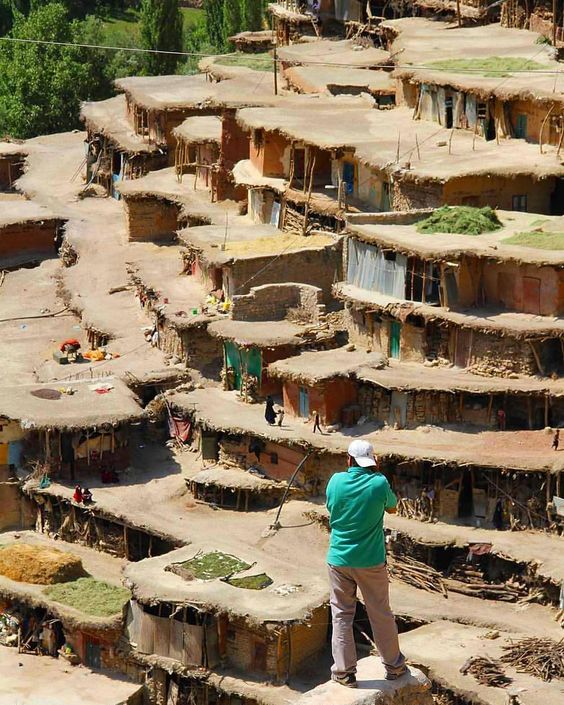Sar Agha Seyed village, located in Iran’s Chaharmahal and Bakhtiari province, is a beautiful example of ancient building techniques and vibrant traditions. What makes this village truly special is its architectural feature where roofs double as yards for the houses in this terraced community. So not only do the roofs look visually striking, but they also serve a practical purpose.

Etched across the slopes of Zagros mountain, the breathtaking village adopts a circular formation architecture commonly referred to as the “yard-roof” style. Considering the geographical and climatic conditions, these structures serve as an innovative solution and a clear testament to the ingenious usage of space and resources by its ancestors.

As one journeys around the village, it’s impossible to miss the interconnected grey houses built from a blend of clay and straw. These houses are not standalone structures but echo the interdependence seen in rural, tribal societies. The rooftop of one house forms the yard, or ‘sara,’ of the house above. This communal architecture ensures that all the village’s inhabitants are linked in a communal space, establishing a sense of unity and interconnectivity.

In addition, this distinct architectural effort provides practical solutions to adverse weather conditions. The tightly knit structures provide shared insulation combating the severe winter chills or the sweltering summer heat. It functions as a significant eco-friendly strategy contributing to thermal insulation and hence reduces the need for additional heating or cooling systems.

As an outsider, navigating through the village may seem like a labyrinth, given the complex arrangement of the houses. However, the maze-like design significantly fortifies the village against potential invaders and hostile elements. Historically, it served as a strategic defense mechanism, limiting access to invaders and safeguarding the village’s inhabitants and resources.

Despite its picturesque charm and quaint atmosphere, the village of Sar Agha Seyed is not just a tourist attraction— it is a living, breathing embodiment of age-old traditions, communal bonds, and ecological resilience. The village serves as a perfect reflection of how man can artfully adapt to his environment and thrive while preserving cultural values.

